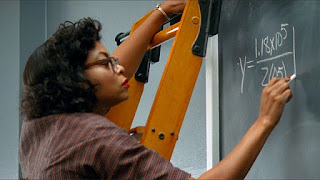The film is based on Wilson's play. It is heavily driven by dialogue and the complexity of the lives of the movie's main characters. For those who are tired of movies that overwhelm the senses with noise and visual special effects, Fences will be a refreshing change.
The movie is like walking into the scenes of a play and becoming part of the story. The script will appeal to those who are not interested in mostly going to movies for an escape. The family's story will reach into your heart, but you will get the most out of the film if you pay close attention to Wilson's use of two key metaphors: baseball and fences.
These two metaphors intensify an already emotionally powerful movie.
Fences is a gut-wrenching portrayal of growing old, coming of age, and coping with the hopes and disappointments of everyday life. Through moments of joy and sorrow, there is a touch of a miracle.
Collateral Beauty is likely to appeal to those who have a spiritual or a metaphysical bent. The movie draws out the way that literature addresses the topics of love, death and time. There were moments during the film when I thought that the screenwriter and the actors were trying too hard to be profound.
From the standpoint of storytelling, I thought that the movie sacrificed a well-crafted storyline to emphasize its message. The narrative aspect of the story was predictable and weak. There were parts in the third act that were downright hokey.
Also, the central character, which was played by Will Smith, was one-dimensional. It was hard to become emotionally invested in a character whose two emotions were angst and angst. And it was hard to understand why Jacob Latimore was selected for this film unless it was for his looks or to draw upon his fan base. It certainly wasn't because of his acting skills.
Nonetheless, it was a movie that left, for me, a ponderous aftertaste, especially once I had a chance to sleep on it.
There are two "ah-ha" moments in the movie; one which is explicit during the climax of the film and the other which is implied at the very end.
These ah-ha moments, especially the one hinted at the end, along with the use of literature to explore how we think about love, death and time, ultimately made the movie worth seeing.
Moonlight is a sensitive portrayal, which is artistically filmed, of a young man who is bullied by his peers and who lacks family support at home. In the pattern of the parable of "The Good Samaritan," he gains care and compassion from a most unlikely character in the story.
The filming was stunning, regarding color, setting, and imagery. The director's use of nonverbal communication through facial expressions, in particular with the lead character as a boy, was powerful, reminding me of the facial expressions in Pasolini's The Gospel According to St. Matthew'.
The narrative was choppy, although I believe the director and screenwriter were going for an "artsy" effect. Rather than holding together as a story, which would have allowed for character development and complications that would lead to a climax and resolution, the writer and director relied on a fragmented selection of scenes. These fragments will move the viewer to tears, but they are ultimately devoid of an underlying story or satisfactory transitions between each leap in the three stages of the protagonist's development.
The movie includes sensitive subject-matter concerning violence, sexuality, and substance abuse. It is not light viewing, but worth seeing for thoughtful audiences.
Hidden Figures is based on the true story of three women who worked for NASA in the 1960s through the early 1970s, overcoming social conventions and assumptions to make vital contributions to America's space program.
Not only were these women "hidden figures" because it did not fit the dominant narrative to acknowledge their contributions, but they also had to create resources and opportunities for themselves that others took for granted as being "just the way things are."
The title is a play on words reflecting both the method of cracking the puzzle of manned space flight (look for the "hidden figure" which conventional math cannot detect) and the practice of hiding these women's contributions from history.
The acting was excellent, and the story held the audience in suspense, which was quite a feat given the fact that we already knew the outcome of the main event that served as a backdrop for the story.
I recommend that parents bring their sons and daughters, teachers bring their students and moviegoers of all ages just kick back and enjoy the film. Your time will be well spent.
It was a gripping story with a subtle but timeless message: no nation or institution can afford to continue to waste and undermine its own talent, and real leadership requires the capacity to think anew rather than to suppress genius.






No comments:
Post a Comment